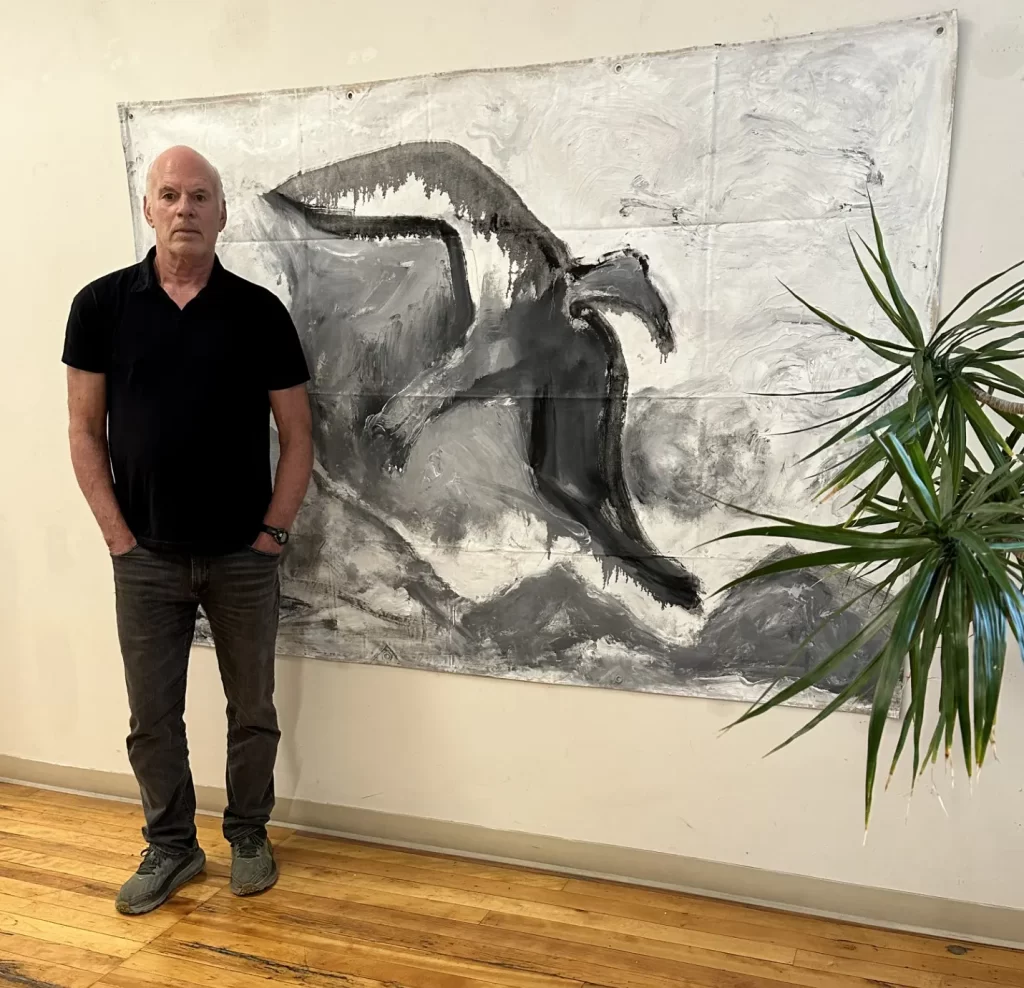About Me

Joseph Saginor
Artist
Oil paint is fluid, rich, and sensual. The first time I ran a cotton ball loaded with solvent over an oil crayon drawing I was struck by its unique possibilities; suddenly a line became a river of color, and I was hooked.
I like the fact that oil takes a long time to dry. This may be viewed as a disadvantage by some, but I find it useful. I like to use a slow drying solvent to extend the drying time. In this way, the painting becomes malleable. It can be scraped, scribed into, and manipulated for days, and new colors can be mixed with existing ones directly on the canvas. Most of my paintings have been painted over several times. I do not do this by design– it seems to happen organically. But I have always been drawn to surfaces – like decaying walls – where underlying layers and previously altered markings show through.
My paintings include figures, landscapes, and portraits, and are representational enough to encourage associations. But to me they have become psychological abstractions frozen in time. The abstraction derives not only from the ambiguity of forms, but from the ambiguity in the way we perceive and construct meaning. I have found them to be expressive statements whose significance may or may not have eluded me during the painting process. But as important as the personal meaning of each piece is to me, so too is the perception of the observer and all that they bring with them to the encounter. I would like to think that the painter, the viewer, and the inhabitants of the paintings are all engaged in a reciprocal creative effort to reach understanding.
I seldom begin a painting without a reference point – some image from either a photograph, a drawing, or a specific memory. But that only serves to get something onto the canvas. What follows is a process of association and visual problem solving. The original image may be altered or completely supplanted. I regularly turn paintings upside down and sideways while I work to help determine overall balance. It also disorients me so that I do not get locked in or too attached to any one part. I may even abandon the original image in favor of a more compelling one.
This process is not systematic. It is more like taking a slow visual journey across the terrain of the canvas. I sometimes feel like I am wrestling with a painting – in a battle over who controls whom. When I am tentative, the painting usually wins. I am more often rewarded when I am bold, spontaneous, and paradoxically “don’t care” about the outcome. My informal rule is, if I live with a painting for six months and have no thoughts of tinkering with it, it is finished…unless it isn’t.
